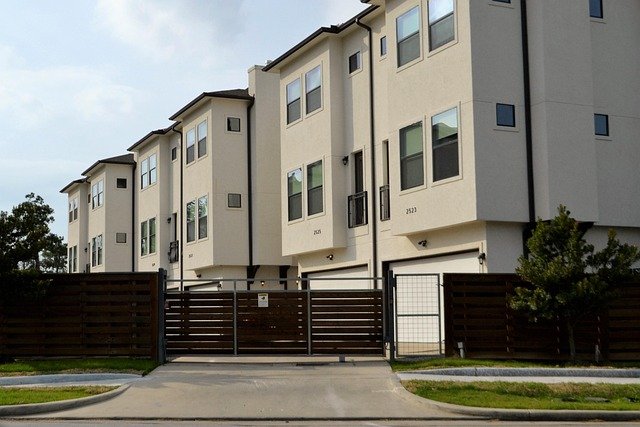Understanding Reverse Mortgages: A Complete Guide
Reverse mortgages have become an increasingly popular financial tool for seniors looking to supplement their retirement income. Unlike traditional mortgages where homeowners make monthly payments to lenders, a reverse mortgage allows homeowners to convert part of their home equity into cash without selling the home or taking on additional monthly bills. This unique financial product is specifically designed for older homeowners who have significant home equity but may be cash-poor. Let's explore the ins and outs of reverse mortgages to help you determine if this option might be right for you or your loved ones.

What is a Reverse Mortgage? Unlock Your Home Equity
A reverse mortgage is a loan available to homeowners aged 62 and older that allows them to convert part of their home equity into cash. The “reverse” part comes from the way the loan works: instead of making payments to the lender, the lender makes payments to the borrower. The borrowed amount grows over time as interest and fees accumulate, and the loan doesn’t need to be repaid until the borrower dies, sells the home, or no longer uses it as their primary residence.
The most common type is the Home Equity Conversion Mortgage (HECM), which is insured by the Federal Housing Administration (FHA). This insurance protects both lenders and borrowers, ensuring that borrowers will never owe more than the value of their home when the loan becomes due.
Homeowners can receive funds as a lump sum, monthly payments, a line of credit, or a combination of these options. This flexibility allows seniors to tailor the reverse mortgage to their specific financial needs.
Who Qualifies for a Reverse Mortgage? Eligibility & Requirements
To qualify for a reverse mortgage, applicants must meet several important criteria:
-
Age requirement: All borrowers listed on the title must be at least 62 years old.
-
Home ownership: You must own your home outright or have a low mortgage balance that can be paid off with the reverse mortgage proceeds.
-
Primary residence: The home must be your principal residence where you live most of the year.
-
Property type: Most single-family homes, 2-4 unit properties where the borrower occupies one unit, approved condominiums, and manufactured homes that meet FHA requirements qualify.
-
Financial assessment: Lenders will evaluate your income, assets, monthly living expenses, and credit history to ensure you can maintain the property and pay ongoing costs like property taxes and homeowners insurance.
-
Counseling requirement: Before applying, you must meet with an approved housing counselor who will explain the costs, financial implications, and alternatives to a reverse mortgage.
The amount you can borrow depends on your age (older borrowers can typically borrow more), current interest rates, and the appraised value of your home.
How Reverse Mortgages Provide Financial Flexibility for Seniors
Reverse mortgages can significantly enhance financial flexibility during retirement in several ways:
Supplementing retirement income is perhaps the most common use of reverse mortgage funds. Monthly payments from a reverse mortgage can help cover everyday expenses, especially for retirees whose savings or Social Security benefits fall short of meeting their needs.
Medical expenses often increase with age, and a reverse mortgage can provide funds to cover healthcare costs not covered by Medicare or other insurance. The line of credit option can be particularly useful for unexpected medical bills.
Home improvements and aging-in-place modifications can be funded through a reverse mortgage. This might include installing wheelchair ramps, bathroom grab bars, or other accessibility features that allow seniors to stay in their homes longer.
Debt consolidation is another practical application. Using reverse mortgage proceeds to pay off existing debts can eliminate monthly payments and free up cash flow for other expenses.
Some financial planners also recommend using a reverse mortgage line of credit as a strategic part of retirement planning, drawing on it during market downturns to avoid selling investments at a loss.
Understanding Reverse Mortgage Costs: Fees, Interest & More
Reverse mortgages come with various costs that borrowers should carefully consider:
Origination fees are charged by lenders to process the loan, typically ranging from $2,500 to $6,000 depending on the home’s value. FHA rules cap these fees at $6,000.
Mortgage insurance premiums (MIP) are required for all HECM reverse mortgages. Borrowers pay an upfront MIP of 2% of the home’s appraised value (capped at the FHA lending limit) and an annual MIP of 0.5% of the outstanding loan balance.
Interest rates can be fixed or adjustable. Fixed rates provide certainty but typically require taking all funds as a lump sum. Adjustable rates offer more flexibility in how you receive payments but may change over time based on market conditions.
Servicing fees, appraisal costs, title insurance, and other closing costs similar to traditional mortgages also apply to reverse mortgages.
| Cost Type | Typical Range | Notes |
|---|---|---|
| Origination Fee | $2,500-$6,000 | Capped at $6,000 by FHA |
| Upfront MIP | 2% of home value | Based on appraised value or FHA limit |
| Annual MIP | 0.5% of loan balance | Accrues annually |
| Interest Rate | 3-6% (varies) | Fixed or adjustable options |
| Closing Costs | $1,000-$2,500 | Includes appraisal, title search, inspections |
Prices, rates, or cost estimates mentioned in this article are based on the latest available information but may change over time. Independent research is advised before making financial decisions.
Reverse Mortgages & Your Estate: Impact on Heirs
A common concern about reverse mortgages is how they affect inheritance plans and heirs. When the last borrower passes away or permanently moves out of the home, the loan becomes due. At this point, heirs have several options:
Repay the loan and keep the house: Heirs can pay off the reverse mortgage balance (which cannot exceed the home’s value) and retain ownership. This can be done through refinancing or other means.
Sell the home and keep any equity: If heirs choose to sell, they keep any proceeds exceeding the loan balance. This is an important protection of reverse mortgages—if the sale price doesn’t cover the full loan amount, FHA insurance covers the difference.
Deed the home to the lender: If the loan balance exceeds the home’s value or heirs don’t wish to deal with the property, they can simply turn over the keys to the lender without any further obligation.
It’s worth noting that non-borrowing spouses may have certain protections allowing them to remain in the home after the borrowing spouse’s death, provided they meet specific requirements.
Effective estate planning is crucial when considering a reverse mortgage. Borrowers should discuss their plans with family members and consider consulting with an elder law attorney to ensure heirs understand what will happen to the home.
Conclusion
Reverse mortgages can be a valuable financial tool for seniors who want to access their home equity while aging in place. They provide flexibility and can help supplement retirement income, cover healthcare costs, or fund home improvements. However, they come with significant costs and complexities that require careful consideration. Understanding the eligibility requirements, costs, and impact on heirs is essential before deciding if a reverse mortgage is the right choice. For many seniors, the ability to remain in their homes while improving their financial situation makes reverse mortgages an attractive option worth exploring.




